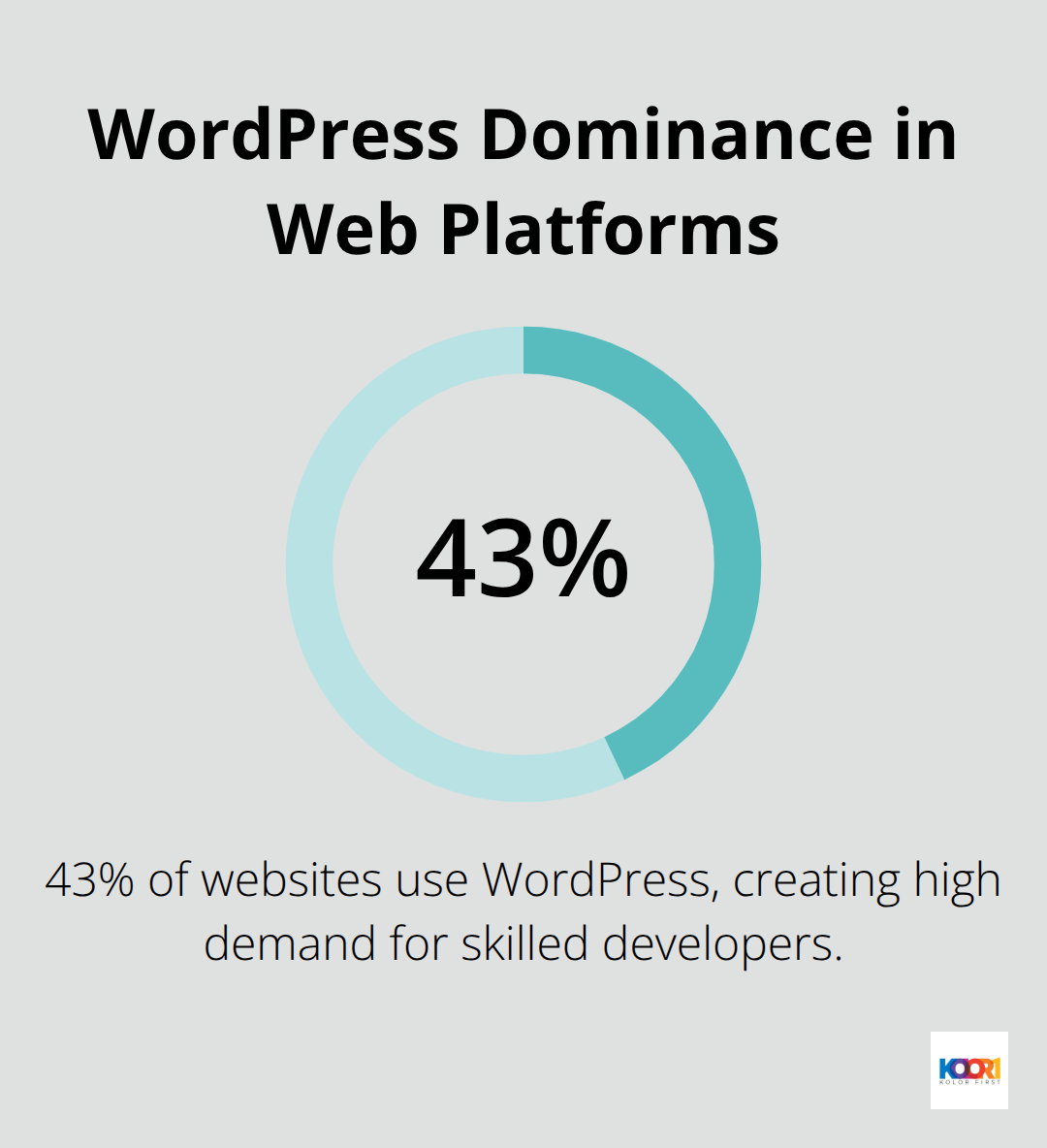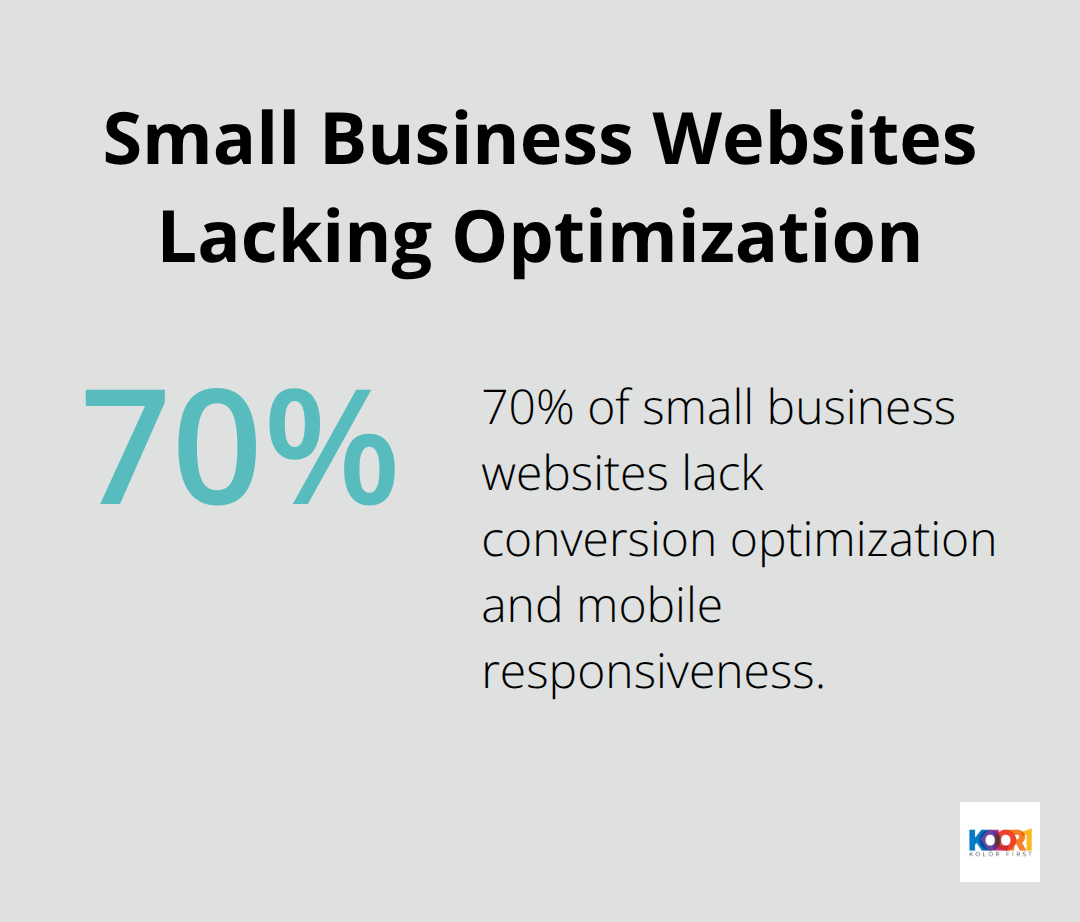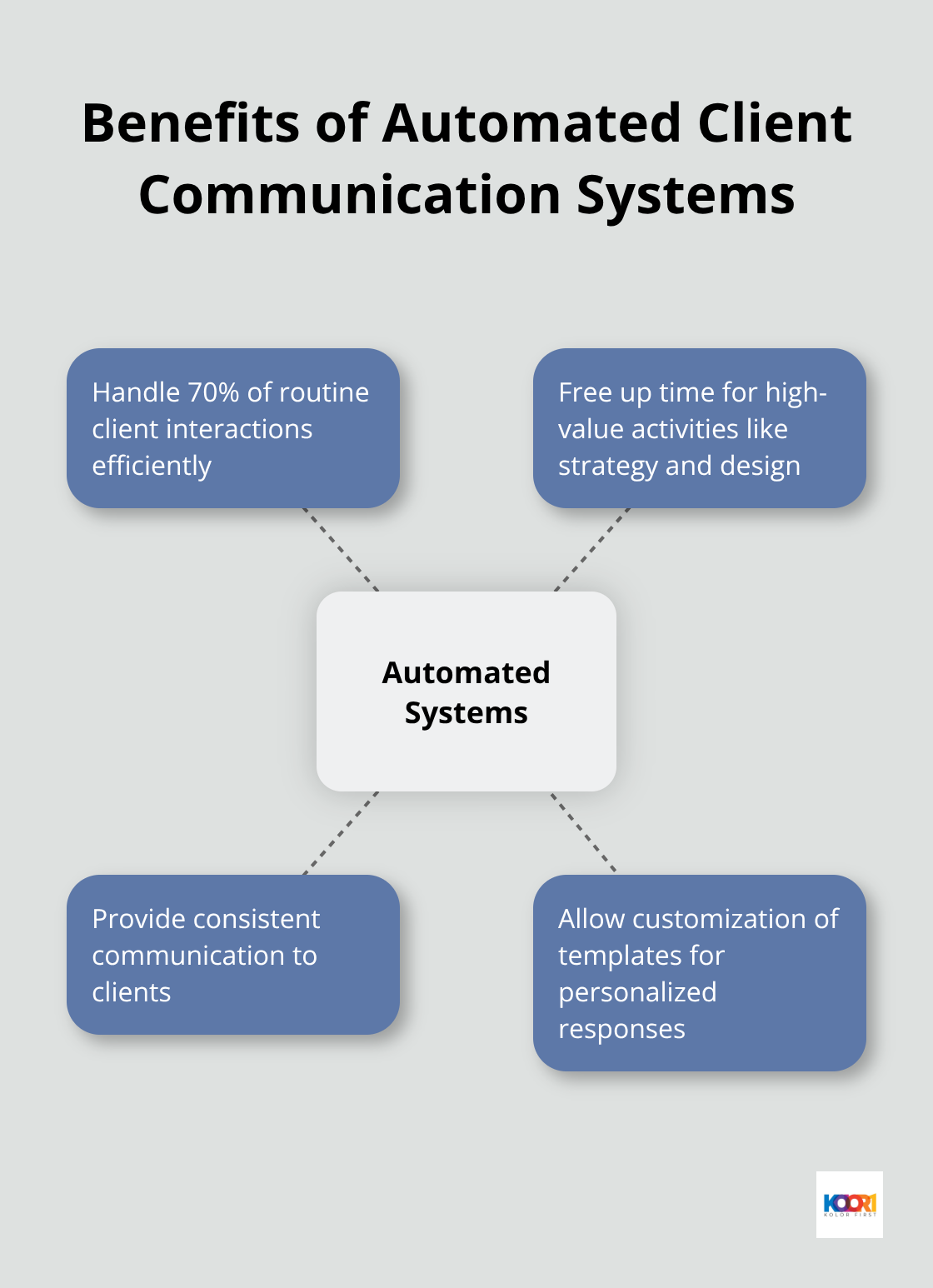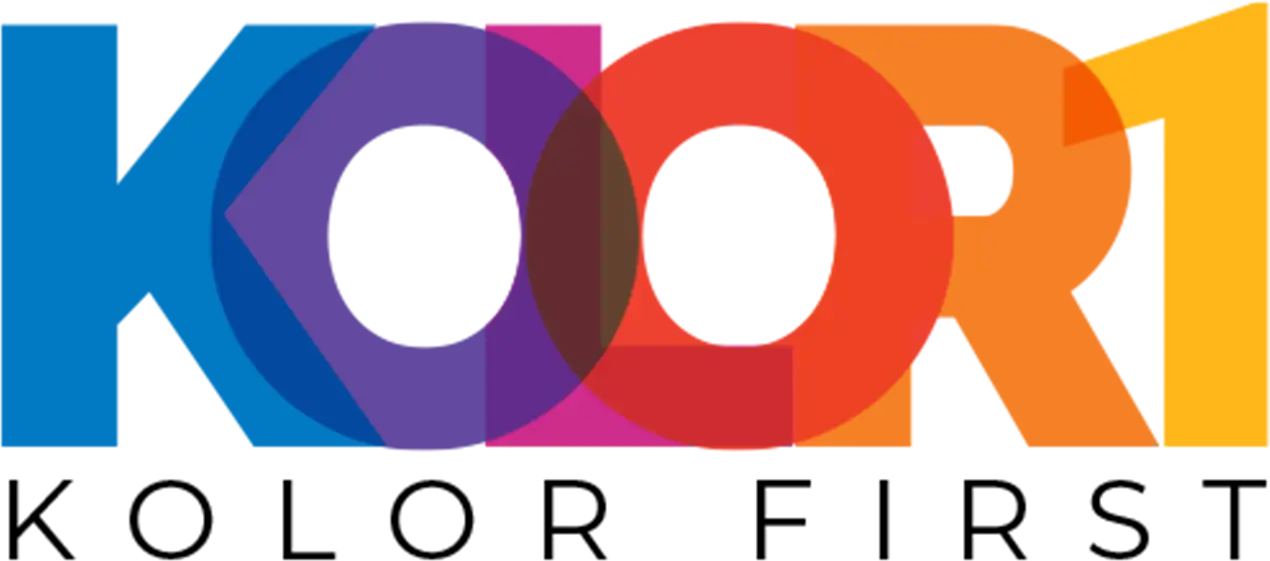The web design industry generated $40.8 billion in revenue in 2023, with freelance designers earning between $50,000 to $150,000 annually. Yet most designers struggle to transform their creative skills into sustainable income.
We at Kolorfirst LLC know that turning web design as a business requires more than technical expertise. Success demands strategic planning, smart pricing, and systematic client acquisition methods that separate profitable agencies from struggling freelancers.
Building Your Web Design Foundation
Your technical foundation determines whether clients pay you $500 or $5,000 per project. Skip Photoshop and focus on Figma for design mockups, as 62% of designers report improved workflow collaboration through modern tools. Master responsive CSS Grid and Flexbox instead of outdated float layouts. Learn WordPress development thoroughly since 43% of websites use this platform, which creates massive demand for skilled developers.

Portfolio Projects That Convert Prospects
Generic portfolio pieces kill your conversion rate. Create three specific project types that demonstrate real business impact. Build an e-commerce site that shows payment integration and mobile optimization. Design a local service business website with clear calls-to-action and lead capture forms. Develop a SaaS landing page with conversion tracking features.
Each project should include before/after metrics and client testimonials. Avoid personal projects or fictional brands that prospects cannot verify or relate to their business needs. Real client work with measurable results outperforms creative experiments every time.
Brand Positioning That Commands Premium Pricing
Position yourself as a business growth partner, not a designer who makes things pretty. Research from GoodFirms shows that 84.6% of web designers believe cluttered designs drive away customers. Your brand message should emphasize conversion optimization and revenue generation rather than aesthetic appeal alone.
Create case studies that show how your designs increased client sales by specific percentages. Use professional headshots and business language on your website. Charge retainer fees for ongoing optimization rather than one-time project payments. This approach separates you from commodity designers who compete solely on price.
Technical Skills That Generate Higher Revenue
Focus on skills that directly impact client revenue streams. Master Google Analytics setup and conversion tracking (since 90% of businesses need this data). Learn basic SEO implementation because sites with proper optimization generate 53% more organic traffic. Understand page speed optimization techniques, as 40% of visitors abandon sites that take more than 3 seconds to load.
These technical competencies allow you to charge consulting fees beyond basic design work. Clients pay premium rates for designers who can prove their websites generate measurable business results.
With your foundation established, the next step involves identifying and attracting the right clients who value these specialized skills.
Finding and Securing Profitable Clients
Small business owners with annual revenues between $500,000 and $5 million represent your highest-value prospects. These companies have budget flexibility but lack internal design teams, which creates perfect conditions for premium rates. Target e-commerce businesses, professional service firms like law practices and medical clinics, and SaaS startups that seek rapid growth. Avoid restaurants and retail shops, as these industries typically operate on thin margins and view websites as expenses rather than investments.
Research shows 70% of small business websites lack conversion optimization and mobile responsiveness. Focus on established businesses ready to scale rather than startups with limited budgets. Profitable clients understand that quality web design generates measurable returns, not just online presence.

Marketing Strategies That Generate Quality Leads
Content marketing outperforms cold calls by 300% for web design services. Create weekly blog posts about conversion optimization, mobile design trends, and website performance metrics. LinkedIn generates the highest-quality B2B leads, with decision-makers who actively seek professional services. Share case studies that show specific revenue increases your designs achieved for previous clients.
Cold emails work when you research prospects thoroughly and personalize messages around their current website problems. Tools like Google Maps help identify local businesses with outdated sites. Send three follow-up emails spaced one week apart, as 80% of sales require five or more touchpoints (according to marketing research). Avoid generic templates that mention improved online presence without specific recommendations.
Pricing Models That Maximize Profit Margins
Value-based rates generate 40% higher profits than hourly fees. Quote projects based on expected business impact rather than time investment. A website that generates $50,000 additional annual revenue justifies $8,000 to $12,000 rates, regardless of hours required. Package ongoing maintenance and optimization services into monthly retainers between $800 and $2,500.
Require 50% deposits before you start any project, as this filters out uncommitted prospects and improves cash flow. Offer three tiers with your preferred option positioned as the middle choice. The highest tier should include advanced features like conversion tracking, A/B testing, and performance monitoring that justify premium rates.
Client Red Flags That Signal Project Problems
Prospects who ask for “quick and cheap” websites rarely pay on time or appreciate quality work. Clients who request unlimited revisions or vague project scopes create scope creep that destroys profit margins. Avoid businesses that compare your rates to template builders like Wix or Squarespace (these clients don’t understand professional value).
Watch for clients who delay feedback, miss scheduled calls, or request major changes after project approval. These behaviors indicate poor project management skills that will complicate your workflow and extend timelines beyond profitable limits.
Once you identify and secure these premium clients, the next challenge involves streamlining your operations to handle multiple projects efficiently while maintaining quality standards.
Scaling Your Web Design Business
Systematic workflows separate profitable agencies from overwhelmed freelancers. Create standardized templates for client onboarding, project briefs, and design approval processes. Use project management tools like Asana or Monday.com to track deadlines and client communications automatically.
Develop reusable code libraries and design components that reduce project completion time by 40%. Build wireframe templates for common business types like e-commerce stores, service businesses, and SaaS platforms. This systematization allows you to handle 15-20 projects monthly instead of three or four custom builds.
Build Your Freelancer Network
Partner with specialized freelancers rather than hire full-time employees. Connect with copywriters who understand conversion principles, developers skilled in advanced JavaScript frameworks, and SEO specialists with proven track records. Platforms like Upwork and 99designs help identify talent, but referrals from other agencies provide higher-quality connections.
Pay freelancers 60-70% of client rates while you maintain project oversight and client relationships. This model scales faster than traditional employment and reduces overhead costs by 50%. Quality freelancers deliver consistent results without the administrative burden of permanent staff.
Expand Revenue Beyond Web Design
Monthly retainer services generate predictable income streams that stabilize cash flow. Offer website maintenance packages at $300 monthly for security updates, performance monitoring, and content changes. Digital marketing services like Google Ads management and social media content creation command $1,500-$3,000 monthly retainers.
Conversion rate optimization audits sell for $2,000-$5,000 per project and require minimal time investment. Host workshops for client teams on website management to create additional revenue while you reduce support requests. These expanded services increase average client value from $5,000 one-time projects to $25,000 annual relationships.
Automate Client Communication
Set up automated email sequences for project milestones, payment reminders, and feedback requests. Use tools like Calendly for client scheduling and Stripe for automatic invoice collection. Create template responses for common client questions about revisions, timelines, and technical issues.
Automated systems handle 70% of routine client interactions freeing your time for high-value activities like strategy and design. Clients appreciate consistent communication without feeling like they receive generic responses when you customize templates appropriately.

Final Thoughts
Web design as a business demands strategic focus on three core elements: technical expertise that drives client results, systematic client acquisition methods, and scalable operational processes. The most successful designers position themselves as revenue partners rather than creative service providers, which commands premium rates and long-term client relationships. This approach separates profitable agencies from struggling freelancers who compete solely on aesthetic appeal.
Common mistakes destroy profitability and should be avoided at all costs. Never compete on price alone, as this attracts clients who don’t value professional expertise. Don’t accept projects without clear scopes and 50% deposits upfront (this filters out uncommitted prospects). Resist the temptation to handle every task yourself instead of building reliable freelancer networks that enable sustainable growth.
Your next steps involve implementing automated systems for client communication, developing monthly retainer offerings, and expanding services beyond basic website creation. Focus on conversion optimization and digital marketing services that generate recurring revenue streams. We at Kolorfirst LLC help agencies establish market authority and attract premium clients through our innovative branding solutions that emphasize professional value over commodity pricing.






